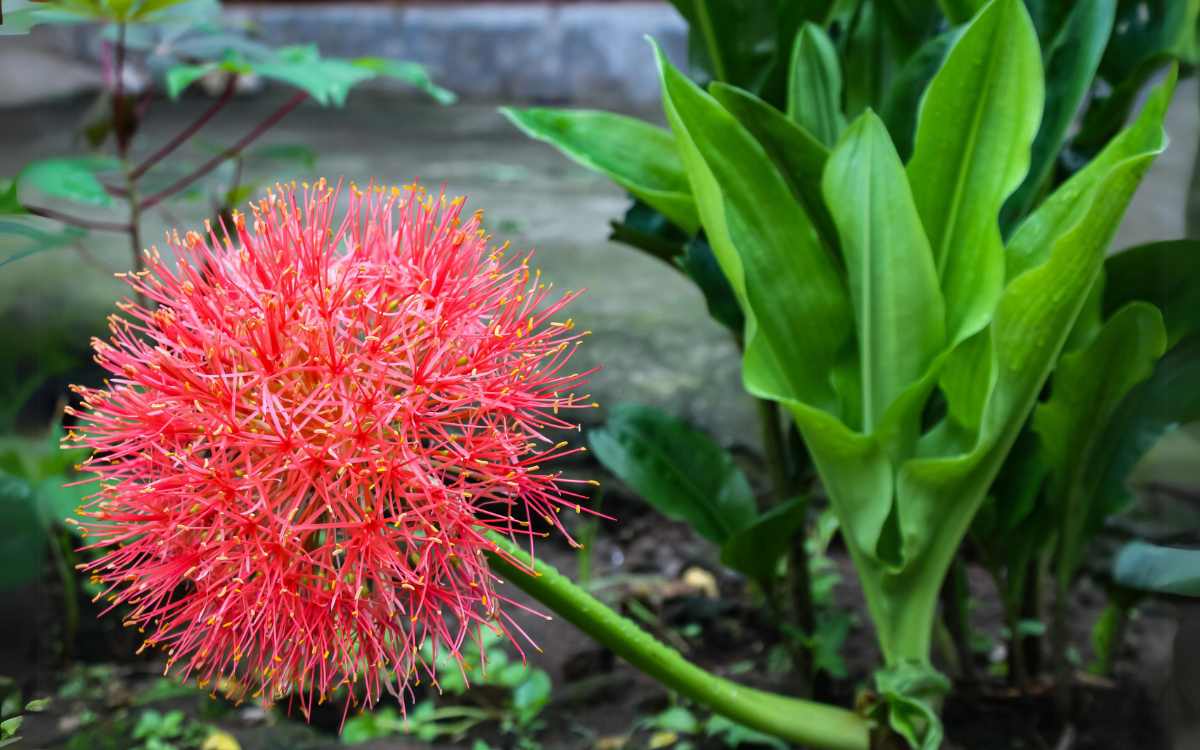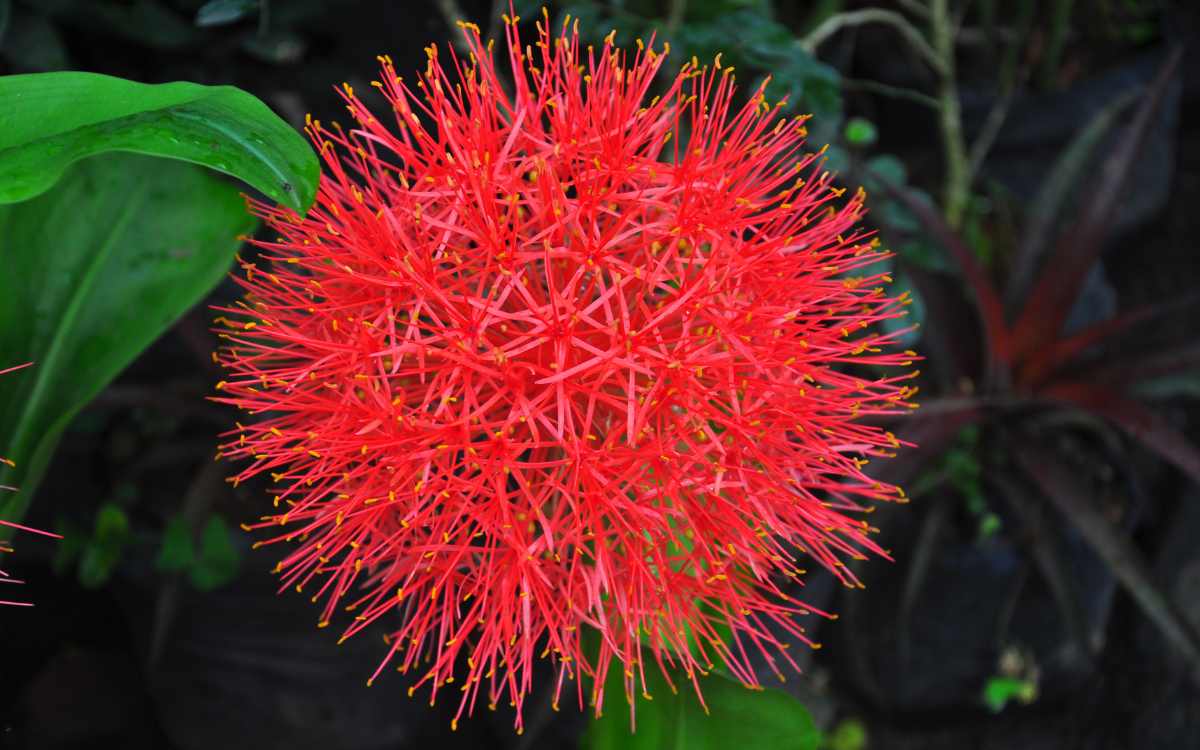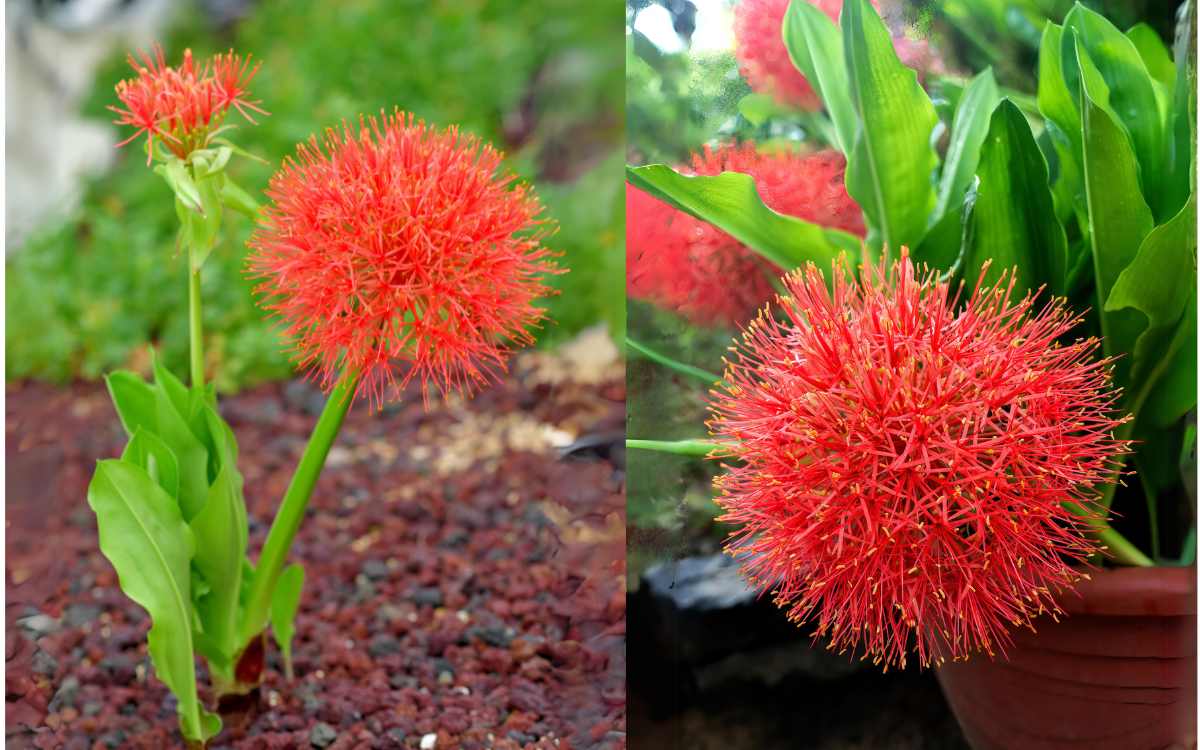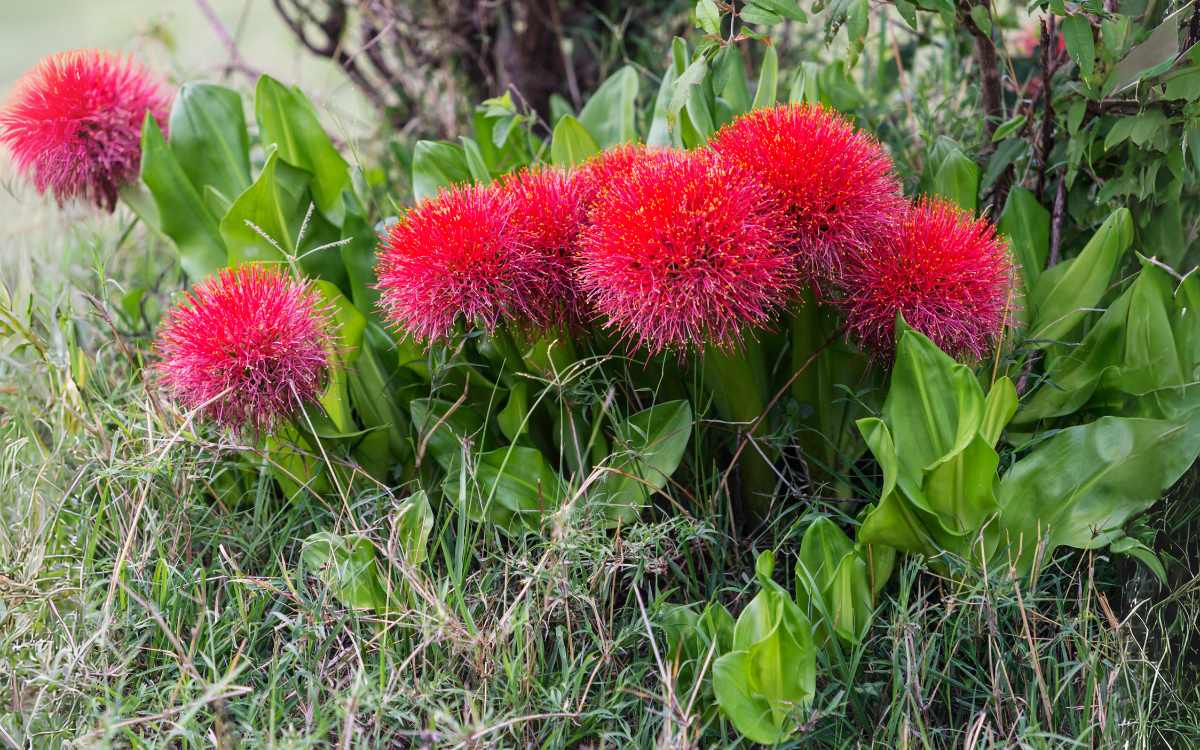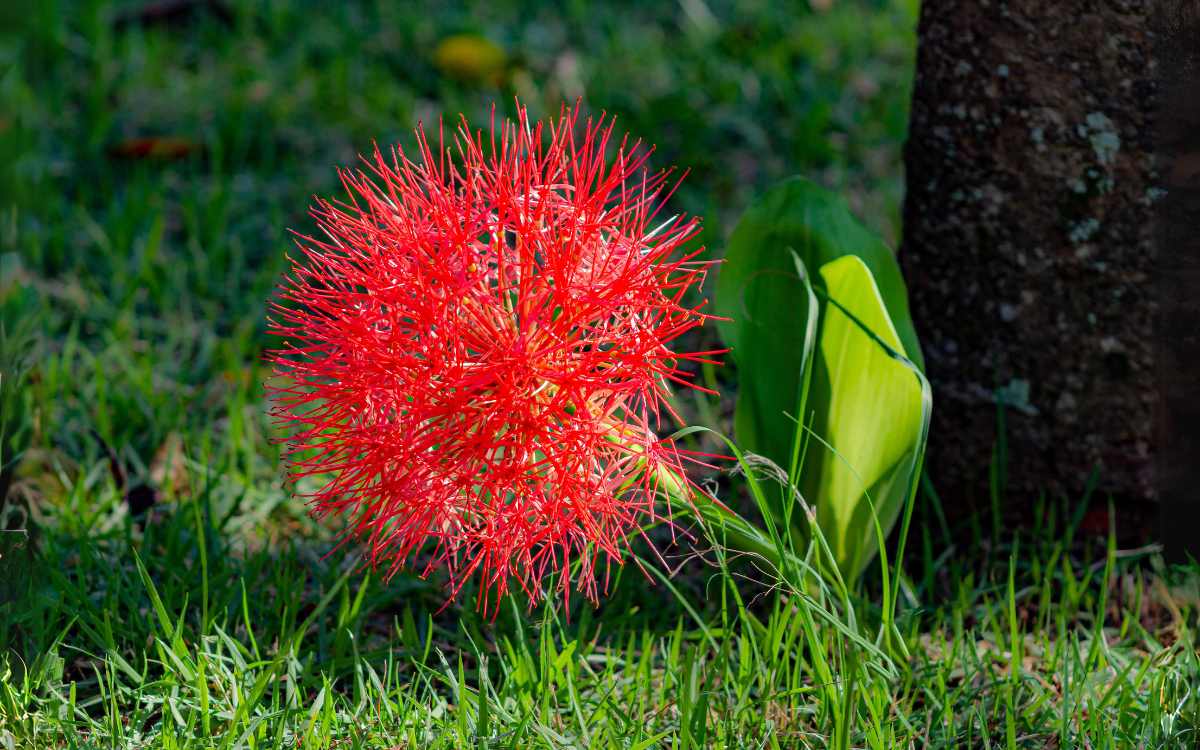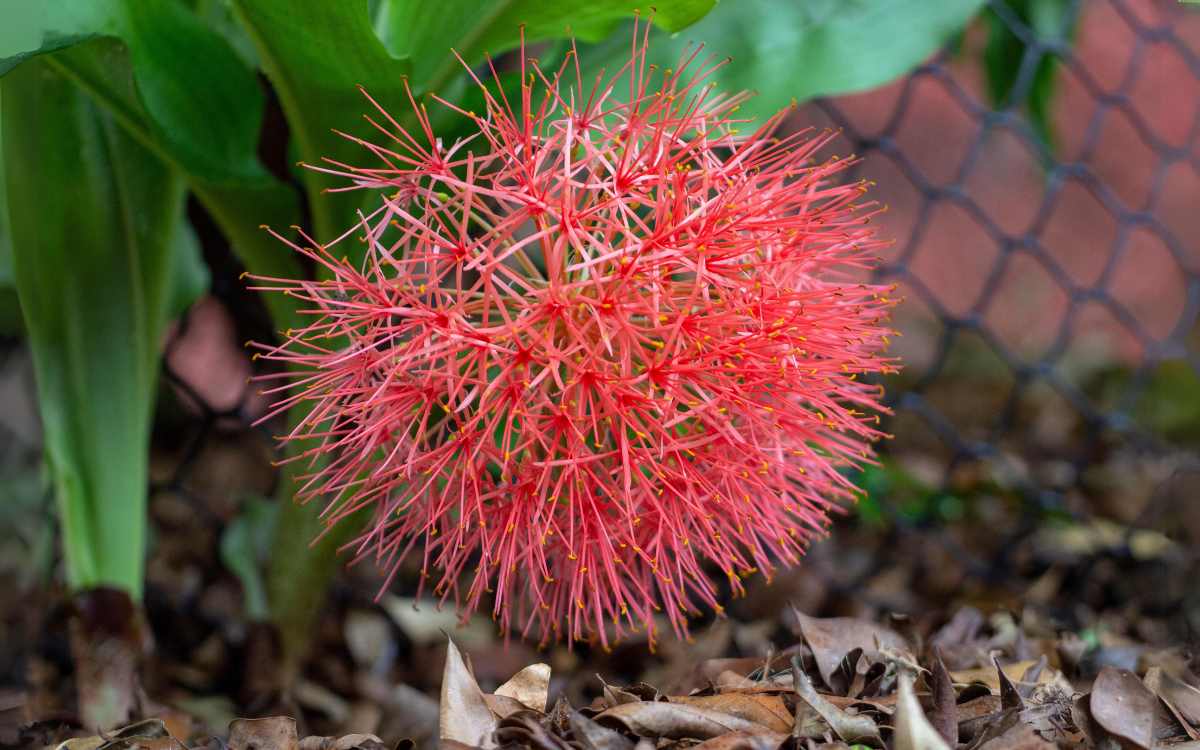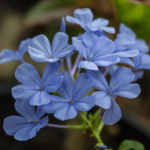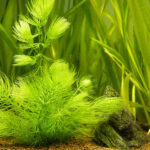Scadoxus multiflorus, popularly known by various names such as blood lily, is a plant that draws attention for its scarlet-red flowers.
Native to southern Africa and displayed in gardens and greenhouses around the world, this is a plant that has been winning the hearts of many growers, and below we will discuss more about it.
Characteristics
Scadoxus multiflorus starts growing from a strong bulb. Each year, it produces a stem that has no leaves and ends in a group of flowers called an umbel.
This umbel can be up to 20 cm (7.9 inches) in diameter and is composed of about 200 small flowers of an intense scarlet-red.
After the flowers wither, the plant forms round red fruits that are also beautiful.

The leaves are large, green, and thick, grow separately from the flower stem, and have an elongated shape. These leaves form a beautiful contrast with the red flowers, making the plant very decorative for gardens.
Curiosities
- Pollinator Attraction: the flowers of the blood lily are very beautiful and attract various pollinators, such as bees. Having these pollinators nearby can improve the health of the garden and help the plant propagate through seeds.
- Poisonous Plant: it is important to know that all parts of this plant are very poisonous. Toxic alkaloids are present in it, and in some African cultures, these toxins are used to poison arrows.
- Medicinal Uses: despite being toxic, parts of this plant are used to make traditional medicines. It is important to handle the plant carefully and use protection, such as gloves, because of its toxic compounds.
- History and Botany: Scadoxus multiflorus was once classified in another genus, Haemanthus, before being reclassified.
See below the step-by-step to take care of this plant.
How to Care for the Blood Lily
To keep your blood lily healthy and ready to bloom every year, you need to provide some care that will facilitate its healthy development.
To learn what these cares are and how to offer them, keep reading.
Lighting
The blood lily thrives best in semi-shaded environments with partial sun exposure.
Direct sunlight, especially during the hottest times of the day, can be harmful, causing burns on the leaves. Ideally, the location should receive indirect or filtered light, protecting the plant from the intense midday sun rays.
Moreover, it is important to protect the plant from strong winds and adverse weather conditions, such as heavy rains or hail, which can damage the leaves and flowers.
Temperature
As a tropical to subtropical climate plant, the blood lily prefers warm temperatures, ranging from 18 to 28°C (64 to 82°F).
It is not frost-resistant and does not tolerate temperatures below 5°C (41°F).
In regions with cold winters, the plant should be kept indoors or in greenhouses where temperature conditions can be controlled.
Read too:
- Congea Tomentosa (Wooly Congea): Characteristics and Care
- Clitoria Ternatea (Butterfly Pea): Characteristics and Care
- Flaming Glorybower: How to Care and Propagate
- How to Grow and Care for Kalanchoe (With Photos)
- Spiral Cactus – Photos and How to Care
Ideal Soil
Scadoxus multiflorus requires a rich, light, and well-drained soil that can retain moisture without remaining soggy.
An ideal mix for potting can include organic compost, sand, and well-rotted animal manure, in a ratio of 1:4:1.
This combination ensures good drainage while providing essential nutrients for healthy plant growth.
The soil should be able to retain adequate moisture, but at the same time allow excess water to drain easily, preventing the risk of root rot.
The blood lily is quite versatile regarding soil pH, tolerating conditions from acidic to alkaline. However, to optimize growth, it is recommended to keep the pH between 5.5 and 6.5.
This pH range facilitates nutrient absorption and minimizes the risk of problems related to mineral availability in the soil.
How to Water
During the active growth season, which usually coincides with the warmer months, the blood lily needs plenty of water to support the rapid development of leaves and flowers.
During this period, the soil should be kept evenly moist.
It is recommended to water the plant generously, ensuring that the water penetrates deep into the soil to reach the roots, but allowing excess water to drain completely.
This practice helps to avoid soil waterlogging, which can lead to root rot.
After the flowering period, when the flowers begin to wither and the leaves start to decline, the frequency of watering should be gradually reduced.
This change coincides with the plant entering a dormant phase, during which water needs are significantly lower.
Reducing watering helps to prepare the plant for rest, avoiding bulb decomposition and the emergence of fungal diseases.
In winter, watering should be even more limited, keeping the soil just lightly moist.
The goal is to prevent the soil from drying out completely, which could damage the roots, but without allowing it to remain soggy.
In very cold climates, where the plant is kept indoors, the heating environment can dry out the soil more quickly, requiring periodic checks to ensure the soil is not completely dry.
When watering Scadoxus multiflorus, it is important to moisten only the substrate around the plant, avoiding wetting the leaves or stem directly, which can predispose the plant to diseases. Use room temperature water to avoid thermal shocks to the roots.
How to Fertilize
It is recommended to use a balanced fertilizer, such as an NPK (Nitrogen, Phosphorus, and Potassium) in a 10-10-10 ratio, which promotes the overall development of the plant.
During the active growth phase, which usually occurs from spring to summer, balanced liquid fertilizers are ideal because they are easily absorbed by the plant. Moreover, the incorporation of organic matter, such as well-rotted compost, can enrich the soil with essential nutrients and improve its structure.
The ideal frequency of fertilization varies throughout the year, depending on the plant’s growth cycle. Following the manufacturer’s instructions regarding dosage and application is essential to avoid overdosing, which can be harmful.
When applying liquid fertilizers, water should be applied around the base of the plant, never directly on the leaves, to avoid chemical burns.
It is important to water the plant immediately after applying the fertilizer to help distribute the nutrients evenly through the soil and prevent the fertilizer from burning the roots.
Planting and Replanting
When planting Scadoxus multiflorus for the first time, choose a soil that follows the guidelines already explained in this text, moreover, the bulbs should be planted with the tip slightly exposed above the soil surface.
This method not only facilitates the emergence of leaves and flowers but also prevents excess moisture around the bulb, which can cause its decomposition.
Replant in early spring, every three to five years, or when the plant starts to outgrow its pot or planting site.
This process is important to refresh the soil and divide the bulbs that have multiplied, which encourages the plant to continue growing vigorously.
During replanting, select a slightly larger pot and use fresh soil with the same drainage and organic richness characteristics recommended for the initial planting.
When replanting, be careful not to bury the bulbs too deeply, keeping the tip slightly above the soil.
How to Propagate the Blood Lily
The blood lily can be propagated in several ways. The most common propagation techniques include the use of seeds, lateral shoots, and division of bulbs.
Propagation by Seeds:
- Collection and Preparation: The seeds of Scadoxus multiflorus should be collected as soon as they ripen and cleaned of any remaining pulp. This can be done by carefully scraping or washing the seeds.
- Sowing: The cleaned seeds should be sown immediately in well-drained soil. Cover them lightly with soil, without burying deeply, as they need light to germinate effectively.
- Initial Care: Keep the soil consistently moist, but not soggy. Seeds usually take some time to germinate, and flowers may take up to three years to appear, so patience is crucial in this propagation method.
Propagation by Division of Bulbs:
- Best Time for Division: The division of bulbs is usually carried out at the end of the plant’s growth cycle, typically in autumn, after the plant has flowered and the leaves have begun to die.
- Division Process: Carefully, dig up the bulbs, using a clean knife or scissors to separate the excess bulbs that have formed around the main bulb. Ensure that each divided bulb has a part of the rhizome and some intact roots.
- Replanting: Plant the divided bulbs in rich, organic, well-drained soil, leaving the tip of the bulb slightly exposed. Replanting should be done immediately to prevent the bulbs from drying out.
Propagation by Lateral Shoots:
- Separation of Shoots: At the end of the growing season, identify the lateral shoots growing around the base of the mother plant. These should be carefully separated using clean, sharp tools or hands.
- Replanting: Plant the separated shoots in pots or directly in the ground, using a substrate similar to that used for the bulbs. They should be kept moist and in conditions similar to the mother plant until they are well established.
Common Pests
Mealybugs: These sucking insects can be efficiently controlled with a soap and water solution. Applying the solution with a soft brush can help remove the insects and their residues from the leaves and stems of the plant.
Mites: Small and often difficult to see with the naked eye, mites can be eradicated using specific insecticides or homemade solutions such as neem oil, applied directly to the affected areas.
Slugs: These mollusks are attracted to moisture and can be a problem, especially in humid environments. Controlling them can be done through the use of baits or traps placed around the plant, in addition to keeping the soil around free from organic debris.
Common Diseases
Downy Mildew: This fungal disease often appears in high humidity conditions. Maintaining well-drained soil and avoiding excessive moisture on the leaves through appropriate watering are effective preventive practices.
Root Rot: Usually caused by excess moisture, this condition can be devastating. Ensuring adequate drainage and avoiding soil waterlogging are essential. Affected plants should be removed and the soil disinfected to prevent the spread.
Botrytis and Leaf Spots: These fungal diseases can be avoided by maintaining an appropriate moisture balance and good air circulation. Removing infected leaves and avoiding excessive moisture on the aerial parts of the plant will also help.
Other Problems
Excess Moisture: One of the most common problems is soil waterlogging, which can lead to several of the aforementioned diseases. Watering should be closely monitored to ensure that the soil remains moist but not soggy.
Care with Toxicity: It is important to remember that Scadoxus multiflorus is a toxic plant. Handling the bulbs and leaves should be done with care, preferably with gloves, to avoid skin irritation or other health issues.
Conclusion
By following the tips explained in this text, you will be able to provide good cultivation for your blood lily.
Additionally, always remember to keep your cultivation environment clean, well-ventilated, and use sterilized tools whenever necessary, as this will help prevent problems in your plant.
If you liked this text and are looking for plants to grow in your home or garden, I recommend that you take a look at the options below:
- Plumbago (Leadworts plant): How to Grow and Propagate
- Maidenhair fern (Adiantum spp.) – Care Guide
- Ficus Pumila (Creeping Fig): How to Care and Propagate
- Columnea: Varieties, How to Care and Make Seedlings
- Orchid Care for Beginners: Quick and Easy 7-Step Guide
- How to Care for Ferns in 9 Steps (For Beginners)
Also, please help us by sharing this article on your social networks and leaving a comment below, because I will be very happy to interact with you.
See you next time.

